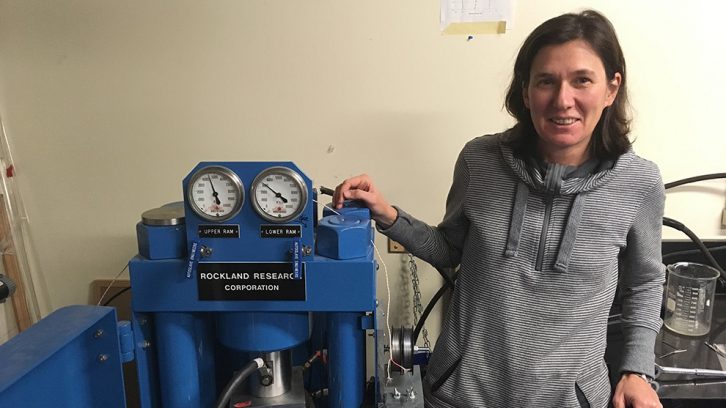Science
Dalhousie scientist puts diamonds under high pressures
Earth Sciences professor uses experimental research lab to better understand diamonds

caption
Dr. Yana Fedortchouk puts pressure on these diamond crystals
caption
Dr. Yana Fedortchouk and her Piston Cylinder PressIn Dalhousie University’s Earth Sciences department, Yana Fedortchouk takes diamond crystals and crushes them into tiny samples, smaller than a ladybug — all in the name of scientific research.
Fedortchouk says her desire to try and squash the hardest known substance is done in order to better understand the “interaction between diamonds and kimberlites,” which still puzzles both geologists and mining experts.
This is why De Beers Canada is supporting Fedortchouk’s research.
Spokesperson Terry Kruger says the company is looking forward “to seeing how to apply” Fedortchouk’s work to their company practices “in the future.”
For now, Kruger remains tight-lipped on how exactly Fedortchouk’s work will benefit De Beers. With her research being so new, they are still speculating about how to best use her findings.
For her experiments, Fedortchouk takes a small sample of diamond crystal and using a piston cylinder press, she exposes the sample to over 500,000 pounds per square inch of pressure and temperatures as high as 2000 C.
When the experiment is over, the Earth Sciences professor is left with a small simulated piece of kimberlite, the igneous rock best known for being the world’s main source of diamonds.
The purpose of the experiment is to replicate the natural process that diamonds experience on their way upwards through the Earth’s crust.
She then compares the results of her experiments with samples taken directly from nature.
While the relationship between kimberlites and diamonds is well known among geologists, successful mines with an abundance of profitable diamonds are few and far between.
According to independent diamond analyst Paul Zimnisky from mining.com, there have been roughly 6,400 kimberlite deposits found around the world. However, only 900 are considered “diamondiferous,” and only 30 have become diamond mines.
Given these low percentages, Fedortchouk explains that there remains a lot of “uncertainty” about how kimberlites form and how they affect diamonds.
Geologists know for certain that diamonds form over a span of one to three billion years under the high pressures and temperatures found at 190 kilometres into the Earth’s mantle — the semi-solid layer of rock just below the crust within the planets inner core.
Kimberlites are considered to be the deepest derived form of igneous rock and originate at depths just below that of diamonds.
They form when magma powerfully shoots up from the mantle and through the crust.
This phenomenon takes rocks, minerals and occasionally diamonds, along for the ride.
As kimberlite magma reaches the surface it explosively erupts, forming vertical deposits called kimberlite pipes, which leave diamond crystals scattered throughout the pipe.
On their rapid journey upwards through the Earth, diamonds interact with the kimberlite magma and any other fluids contained within the crust.
Bumping into other materials under such tremendous pressure and heat can cause the diamonds to partially dissolve. This process can damage diamonds, leaving them in a less valuable state.
Fedortchouk hopes to learn more about which processes dissolve diamonds — information which could benefit companies looking for them.
A colleague of Fedortchouk’s, Maya Kopylova, a professor from the University of British Columbia, says these high pressure experiments have a great deal of “practical applicability” for diamond miners.
However, Fedortchouk’s not focused on the business applications of her findings. She’d rather keep her eye on the crystals in front of her.
“The main goal of any geologist is to gather greater insight into the Earth’s long and complex history,” she says. “(And these experiments) help us understand the whole evolution of the geological system.”
[idealimageslider id=”24323”]

